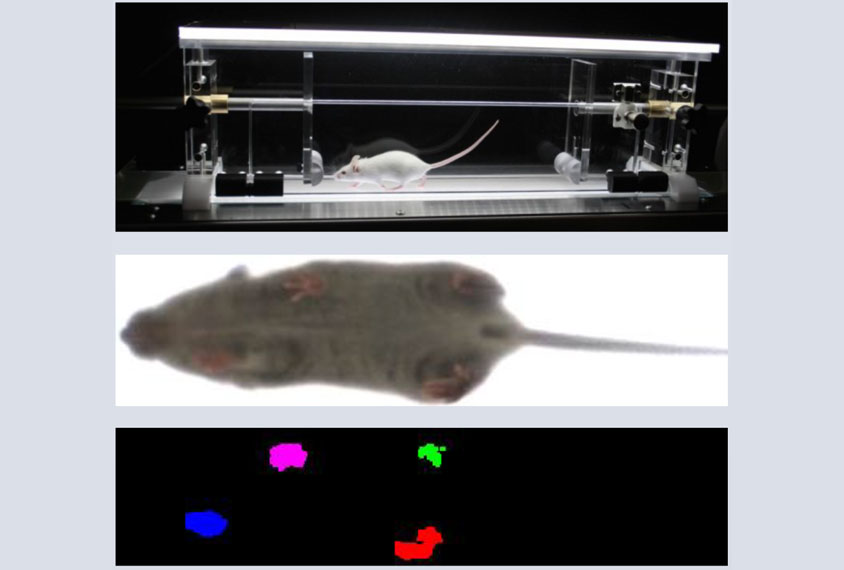
Unusual gait marks mice with mutations related to autism
Mouse models of two genetic conditions related to autism show abnormalities in their movement patterns.
Mouse models of two genetic conditions related to autism show abnormalities in their movement patterns. The findings could help scientists address the motor impairments that often accompany autism.
“Genetic mouse models are a really promising way to look at gait development in a high-throughput, genetically informative manner,” says Claire Weichselbaum, a graduate student in Joseph Dougherty’s lab at Washington University in St. Louis, Missouri. Many autistic people have problems with gait. “But nobody’s really looked at this across development in a very standardized way to see how these gait changes occur.”
Weichselbaum presented the unpublished findings today at the 2019 Society for Neuroscience annual meeting in Chicago, Illinois.
The mice in the study recapitulate aspects of neurofibromatosis type 1 (NF1) or Williams syndrome, two conditions related to autism.
NF1 is characterized by benign tumors and stems from mutations in a gene of the same name. People with Williams syndrome, who lack part of chromosome 7, are often hypersocial and have developmental delays. Both NF1 and Williams syndrome can lead to motor problems.
Persistent pattern:
The researchers analyzed the gait of 26 mice with NF1 mutations and 13 mice with Williams deletions five times from weaning to adulthood. They used the DigiGait Imaging System to record video, capture digital images of paw prints, and extract gait information as the mice ran on a motorized treadmill.
“It’s a very nice way to pick up on the very subtle differences in the spatial, temporal and postural gait characteristics,” Weichselbaum says.
The NF1 mice take longer strides than typical mice, the researchers found. They also show differences in the timing of the gait cycle, spending longer in the ‘stance’ phase — when the paw is in contact with the ground. These characteristics, along with several other subtle abnormalities, show up early and last into adulthood.
“So it’s not that their gait development is delayed,” Weichselbaum says. “It really seems to be an early developing and persistent phenotype.”
The Williams syndrome mice have only temporary problems. Juveniles walk with their feet angled outward, rather than pointing straight ahead. But the problem resolves by adulthood.
The team is analyzing gait in a mouse model of Phelan-McDermid syndrome, which lacks the autism gene SHANK3. They plan to use the same method to study gait in other autism mouse models.
For more reports from the 2019 Society for Neuroscience annual meeting, please click here.
Recommended reading

Expediting clinical trials for profound autism: Q&A with Matthew State

Too much or too little brain synchrony may underlie autism subtypes
Explore more from The Transmitter

This paper changed my life: Shane Liddelow on two papers that upended astrocyte research
Dean Buonomano explores the concept of time in neuroscience and physics

